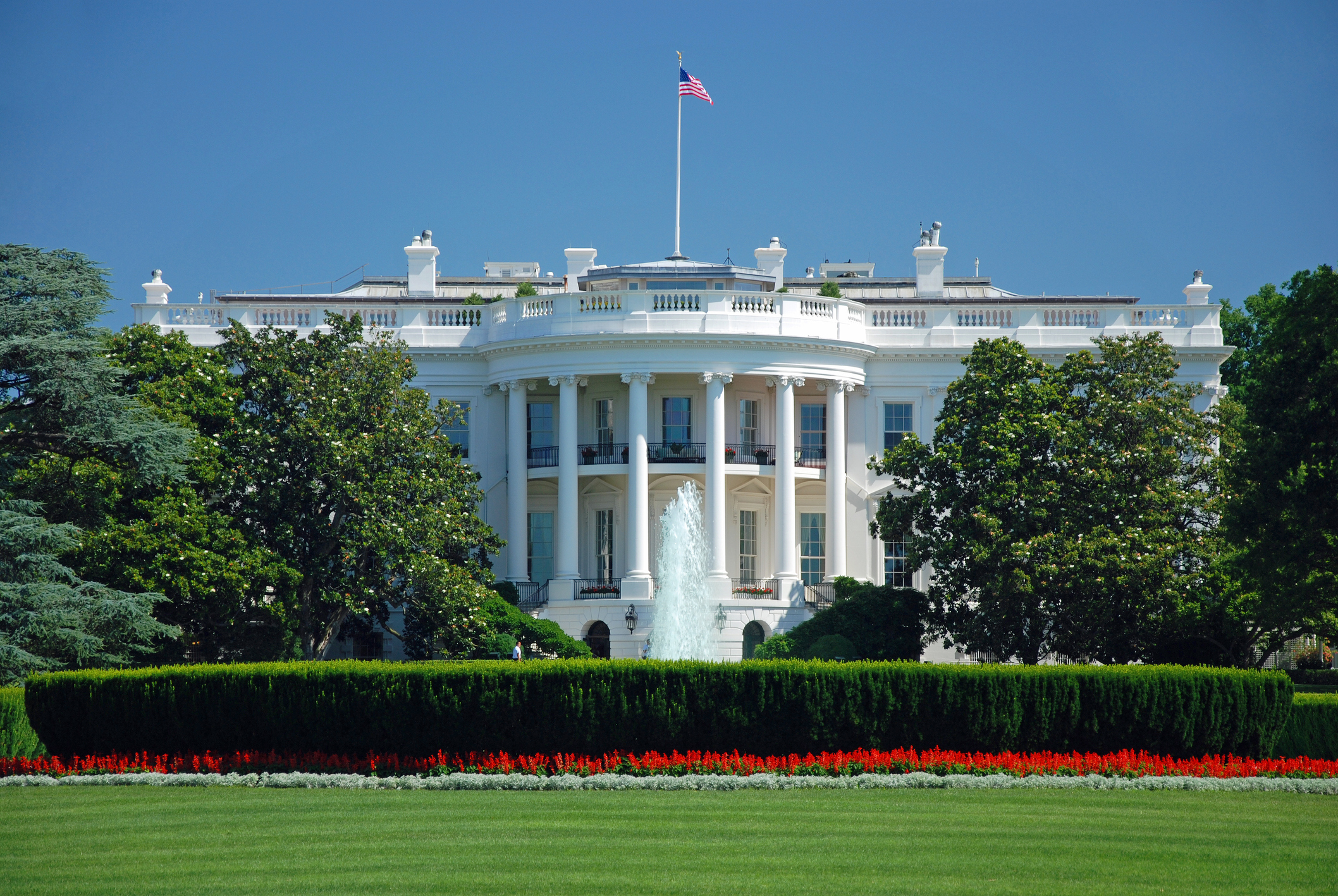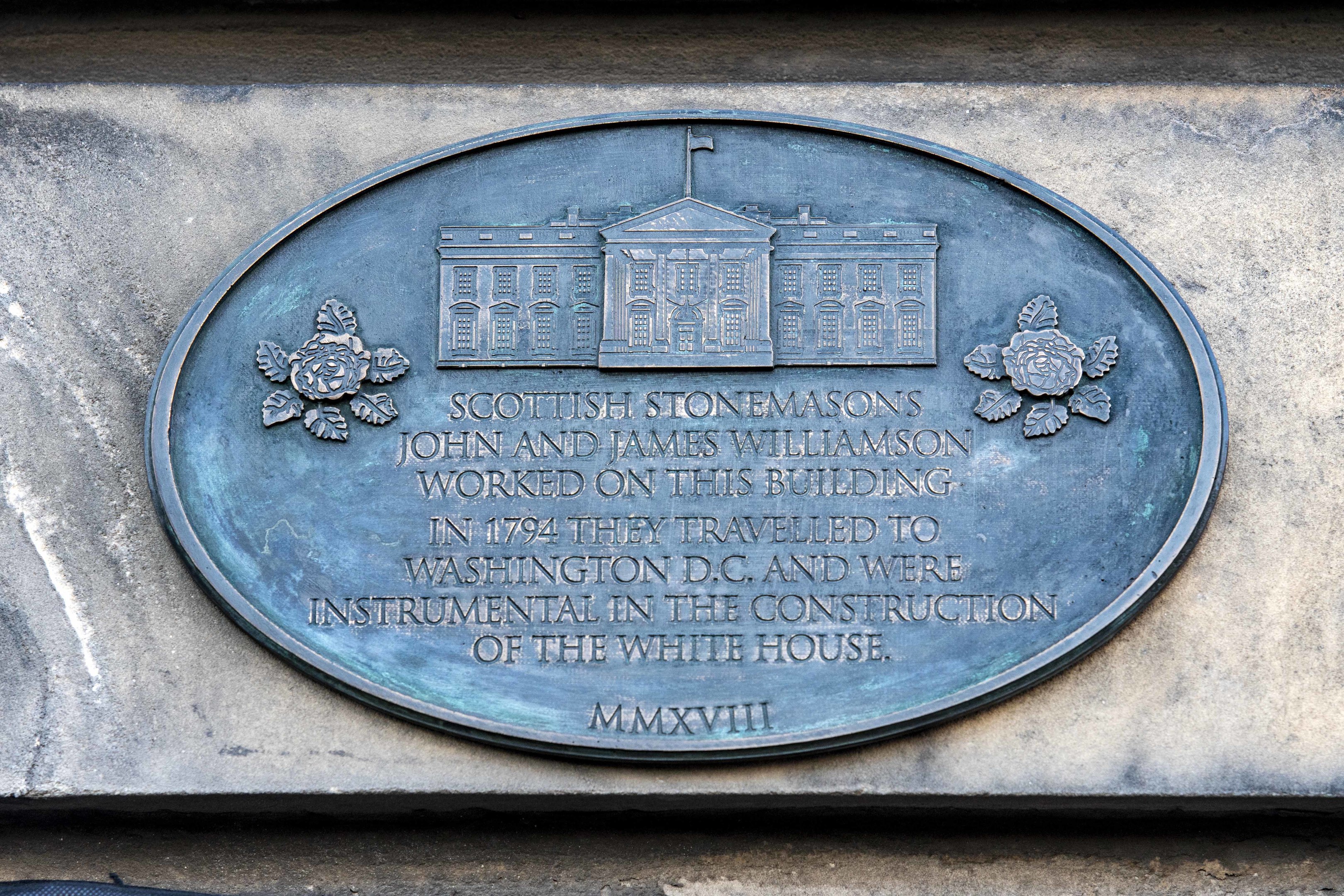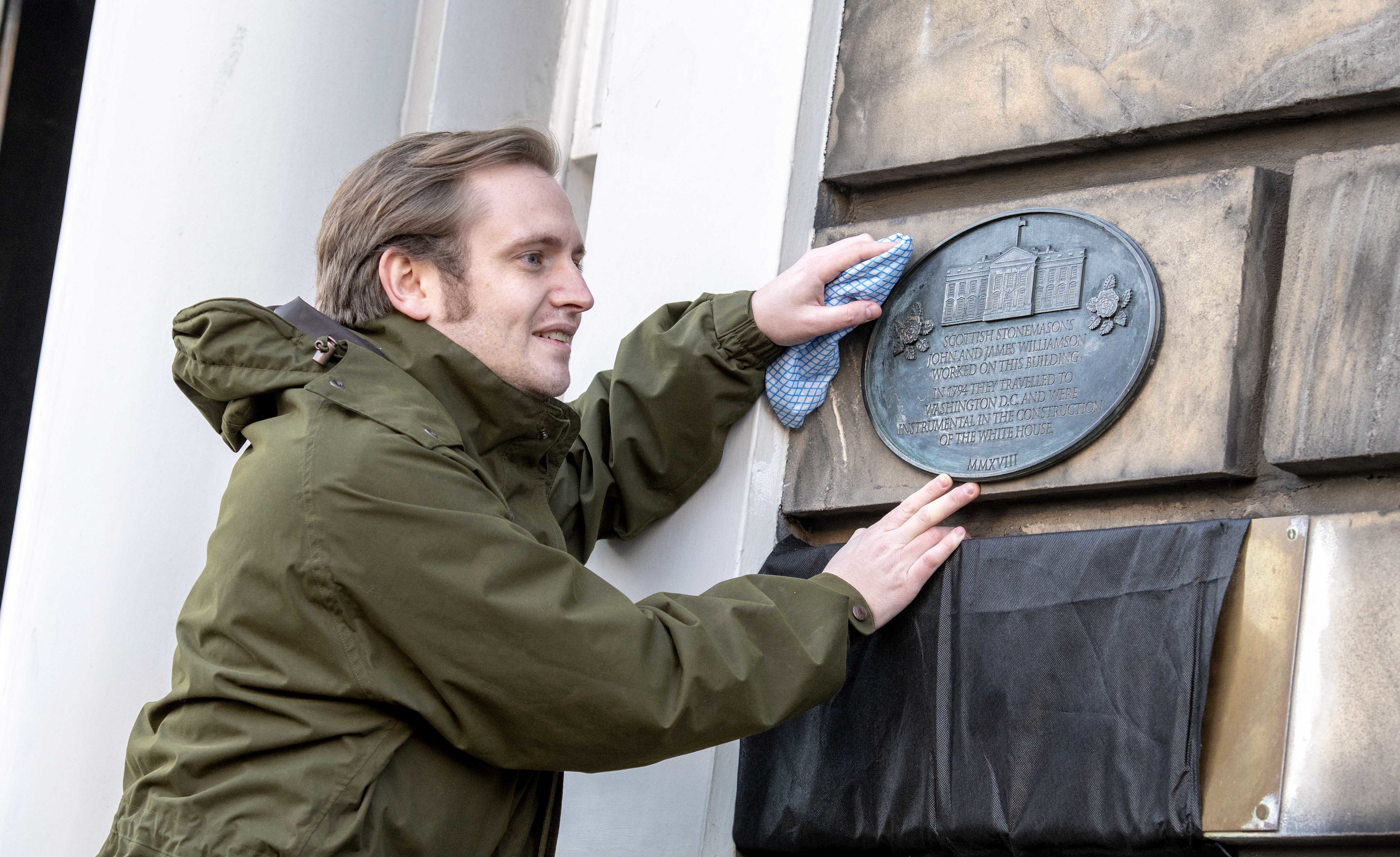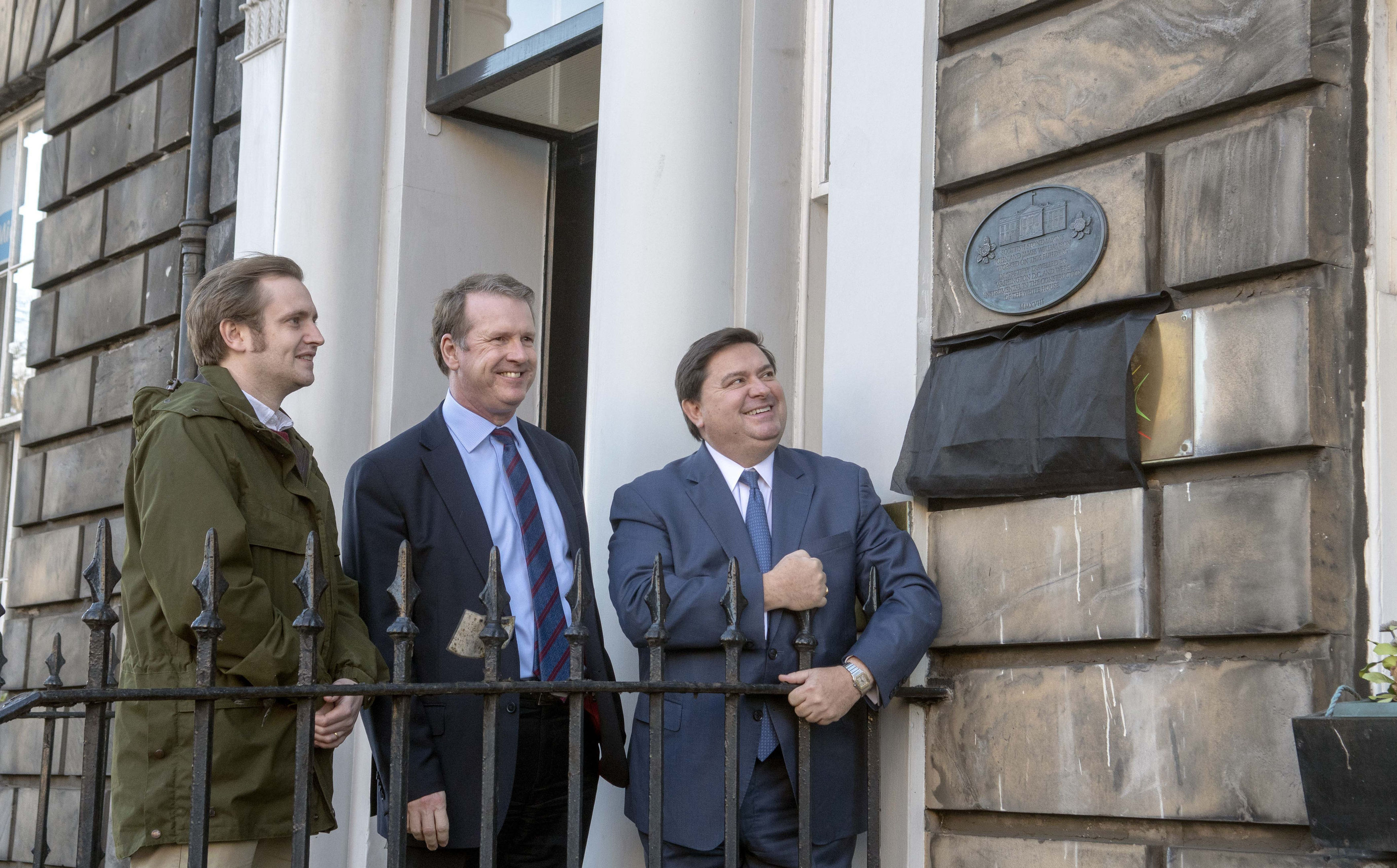
A PLAQUE has been unveiled to honour a group of Scots stonemasons who played a crucial role in the building of the White House.
The iconic building in Washington D.C., which has housed all but one of the USA’s 45 presidents, was constructed with the help of the skilled craftmanship of several Scots.
Brothers John and James Williamson were among a group of six members of Edinburgh Lodge number 8 who travelled to the USA in 1794 and made their mark on the famous landmark.
The new plaque is on display at one of the Williamson brothers’ previous projects at 66 Queen Street in Edinburgh.
Alex Paterson, Chief Executive of Historic Environment Scotland (HES), was joined by Stewart McLaurin, President of The White House Historical Association, to unveil the plaque earlier today.
Mr Paterson said: “Skilled Scottish stonemasonry was highly sought-after during the 18th century, and the important work undertaken on the White House demonstrates its lasting global significance.
“At HES, as well as highlighting the historic importance of Scottish stonemasonry, we are committed to keeping traditional skills alive.
“We are helping to sustain stonemasonry and other traditional craft skills in a range of ways: from our training and apprenticeship programmes, including our partnership with Forth Valley College and our dedicated Conservation Centre in Elgin, to the research and cutting-edge technology at the Engine Shed, Scotland’s first building conservation centre.
“This plaque is a fitting tribute to the pioneering Scottish stonemasons of over two centuries ago, and I hope it will provide inspiration for our next generation of craftspeople to carve their names in history.”
Construction of the White House took place between 1792 and 1800.
John Adams was the first President to live there, as Founding Father George Washington had died while it was being built.
The stonemasons carried out elaborate carvings on the façade of the building, including the iconic ‘Double Scottish Rose’ which features on many different parts of the structure.
Recently Charles Jones, Technical Conservation Skills Programme Manager and stonemason at HES, followed in the footsteps of the Williamson brothers when he was commissioned to carve a replica Double Scottish Rose by the White House Historical Association during a Symposium earlier this year.
The replica is now on display in the White House Visitors Centre.
Mr McLaurin said: “The stone masons of Scotland today are the legacy of great craftsmen from the 18th century who came to Washington and created the beautiful carvings that we still see on the White House.
“The Double Scottish Rose that we see on every pilaster is a Scots wink from those stonemasons and we were thrilled to have a reminder of that extraordinary stonemason talent.”
The story of the stonemasons is explored in a new exhibition now on display at the Engine Shed in Stirling.
The Scots Who Built the White House, housed at Scotland’s building conservation centre, examines the role played by these Scottish stonemasons in the construction of one of most iconic buildings in the world, and how their legacy survives in modern Scottish stonemasonry.
Exhibits on display include the 18th century masons mark book containing mason marks of both John and James Williamson, and the meeting minutes book where the trip was discussed, both on loan from Edinburgh Lodge 8.
A replica of the Double Scottish Rose, carved by HES stonemasons, will also be on display.
The Scots Who Built the White House is now on display at the Engine Shed in Stirling until Friday 12th April 2019. Entry is free.

Enjoy the convenience of having The Sunday Post delivered as a digital ePaper straight to your smartphone, tablet or computer.
Subscribe for only £5.49 a month and enjoy all the benefits of the printed paper as a digital replica.
Subscribe

